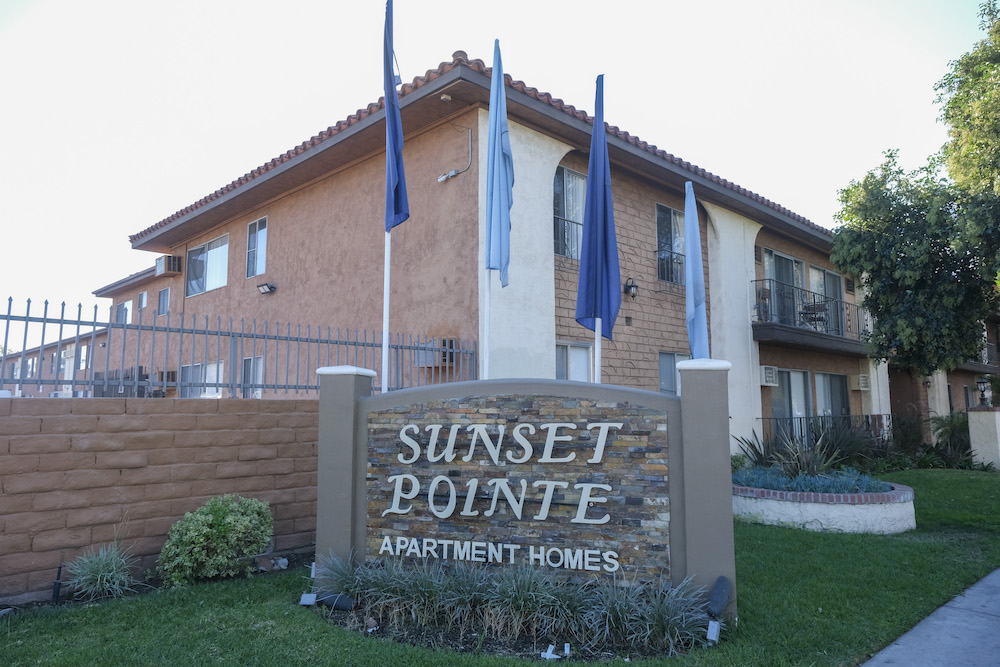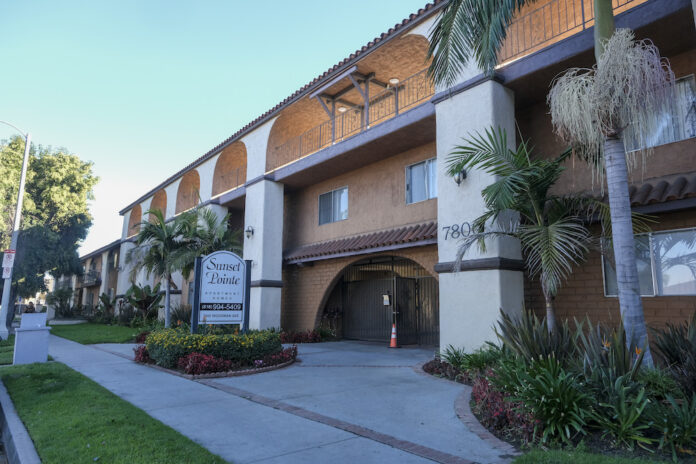A real estate owner with thousands of multifamily units across the Valley is at the center of a 20-year, multibillion dollar dispute. Against his own family.
Five brothers, sons of a diamond merchant hailing from the Indian state of Gujarat, whose ages now range from the 50s to 70s, have been in contention for more than two decades over an alleged oral partnership that claims part ownership for each brother in the real estate fortune of lone defendant Haresh Jogani.
The issue: there’s no written evidence that such an agreement ever existed.
Haresh, who owns tens of thousands of apartment units scattered throughout Los Angeles – primarily in the San Fernando Valley region – was first sued by eldest brother and original plaintiff Shashi Jogani in 2003 on the claim that he did not share his profits.
Shashi, a resident of Glendale, is claiming a 50% interest in Haresh’s real estate companies and corporate entities, which include Echo Park-based J.K. Properties Inc. and H.K. Realty Inc.; Nevada-based Commonwealth Investments Inc.; and British Virgin Islands-based corporations Mooreport Holdings Ltd. and Gilu Investments Ltd.
After two decades of litigation, a trial kicked off last month in downtown Los Angeles.
The jury is expected to spend months hearing conflicting testimony, in part through translators in their native language, Gujarati, from four brothers – Shashi, Shailesh, Rajesh and Chetan – seeking to enforce the alleged partnership while Haresh rebuts their claims.
Twenty-year family feud
While Shashi’s original complaint was filed in 2003, there have been multiple iterations of the case presented which helps explain its long-lasting nature.
“Twenty years is a long life for one case,” Rick Richmond, a partner at Larson LLP and lead counsel for Haresh Jogani since 2021, said in a statement. “Prior to my firm’s involvement, this lawsuit saw court rulings, appeals, spin-off litigations and other developments that have drawn it out over the course of two decades.”
The alleged oral agreement suggests that all four brothers have a share in Haresh’s real estate portfolio, which, as estimated by Shashi, could be worth between $5 billion and $10 billion.
“How long this saga has been dragging out is definitely not usual,” John Nadolenco, managing partner of Mayer Brown’s Los Angeles office who focuses on high-stakes cases and class action defense, said. “Families end up in litigation all the time. It’s not that atypical. What I do think is (atypical), the stakes involved here may be a lot higher than a lot of the other family disputes that you see.”
Nadolenco is not involved in this case.
History
It all started in 1969, when Shashi moved to Los Angeles from India. He built a successful diamond business, like several of his other brothers, and began buying apartment buildings with the money he made.
By 1989, Shashi had acquired approximately 6,500 units of residential properties across Los Angeles and the estimated market value of Shashi’s portfolio was in excess of $375 million, with net equity of approximately $100 million.
Everything was going well for him until 1994, when the Northridge earthquake hit, killing 16 people in one of his apartment buildings when the first floor collapsed. This forced the evacuation of hundreds of other units he controlled.
Faced with disaster as well as the receding economy, Shashi was forced to address defaults and forecloses. His real estate empire crumbled.
Haresh, who was living between India and Israel at the time, was working on building his own diamond trade when he decided to come to Los Angeles to try to help his brother.
Using money from his own diamond business, Haresh purchased some of the properties Shashi had previously owned and hired Shashi as his consultant to help identify other properties to consider purchasing.
Haresh’s real estate business took off – his portfolio grew from the 2,600 units that once belonged to Shashi to roughly 16,400 units – with complexes spreading Glendale, Van Nuys, North Hollywood, Panorama City and more.
In 2001, Shashi attempted to transfer a property deed to himself stating he was Haresh’s 50% partner in the real estate companies that owned the apartments, which he claimed he did at the direction of Haresh. Haresh, who claims otherwise, fired him.
Back and forth

is one of Haresh Jogani’s properties. (Photo by Ringo Chiu)
In February 2003, Shashi sued Haresh, along with Haresh’s real estate companies, and his other four brothers, plus nephew Pinkal Jogani and Pinkal’s real estate management company, stating that each brother was somewhat “liable for the conduct and damages at issue in this action,” presumably due to their alleged pact.
According to the original complaint, in April 1995, the brothers entered an oral agreement – the so-called “California Partnership” – stating that after the properties that Haresh acquired from Shashi received their return of principal investment plus 12%, Shashi was entitled to half the profits, proceeds and value of Haresh’s portfolio, essentially claiming that Haresh’s real estate entities equally belonged to him and alleging that the partnership generates approximately $2 million in net monthly income.
Shashi claimed this switch would have been due in November 2001, according to the complaint, which is when he attempted to transfer ownership to his name and was fired.
In response to the lawsuit, Shailesh, Rajesh, Chetan and Pinkal all denied the existence of any partnership in 2004 and were dismissed from the case.
Later that same year, the court dismissed Shashi’s case against Haresh for having previously sworn under oath, in trials proceeding his own case, that neither he, nor any of his other brothers, had interest in Haresh’s real estate companies.
Two years later, the Court of Appeal reversed the dismissal and remanded the case. Seven of Shashi’s eight claims against Haresh were dismissed except for one – quantum meruit, a judicial doctrine which argues “give him something fair.”
In 2009, Shashi went to trial on that claim alone. While Shashi originally asked for billions of dollars in damages, a jury awarded him $65 million for helping to build Haresh’s business for six years as well as Pinkal’s.
But following the verdict, it was revealed there was juror misconduct, and the judge granted a motion for a new trial on Shashi’s singular quantum meruit claim.
The Court of Appeal affirmed the court’s decision in 2012 to issue a new trial and reversed the court’s earlier dismissal of Shashi’s other seven claims, allowing them to be reintroduced. After nearly a decade in dispute, Shashi was back at square one.
In 2014, after being silent for many years, Shailesh filed his own case against brother Haresh, which prompted Rajesh and Chetan to do the same.
The brothers turned against their former word, stating the three of them had been partners with Haresh in this unwritten global partnership spanning 50 some years, including diamond businesses, which funded Haresh’s real estate acquisitions.
Later, Rajesh and Chetan dismissed their separate lawsuits and re-filed their claims as crossclaims in Shashi’s original lawsuit. A judge ruled against Shailesh’s separate lawsuit in 2019 for fabrication, based on his former declaration swearing he was not part of any real estate partnership. Shailesh appealed but lost.
Shashi’s case continued to go through a series of trials, dismissals and appeals until May of last year, when Shashi dismissed his quantum meruit claim with prejudice, leaving only the partnership claims for resolution.
Essentially, Shashi was bargaining for all or nothing.
Evaluation of the case
The latest trial, which kicked off Oct. 4, is expected to run through December. One of the main questions at hand is whether the alleged oral partnership exists among the brothers. And if it does exist, how can it be proved?
“Oral agreements, in most circumstances, can be just as valid as written ones,” Nadolenco said. “There are certain types of agreements that must be in writing. Real estate sales contracts have to be in writing, but the general rule is oral agreements can be just as binding as written ones.”
And while the case builds its blocks on the basis of questionable ownership of a portfolio of multifamily real estate properties, the alleged oral agreement itself is a partnership agreement – not a real estate one.
But even if oral claims do hold up in court, they can be very difficult to prove.
“What typically happens is the juries will look for some contemporaneous evidence that supports the claim of an oral agreement,” Nadolenco said, who noted existence of the alleged agreement could be found in text messages or email receipts, for example.
According to the trial brief put forth by Haresh’s lawyer, Larson, no such evidence can be found.
Shashi is said to be relying on witnesses to prove his case to the jury, including the mother of all five, Kamlaben Jogani, who previously denied the existence of a partnership between her sons in a 2003 deposition.
“In general, jurors are pretty well equipped to parse through issues related to family feuds,” Nadolenco said. “It’s something they can all relate to.”
Shashi’s attorney did not return requests for comment.
